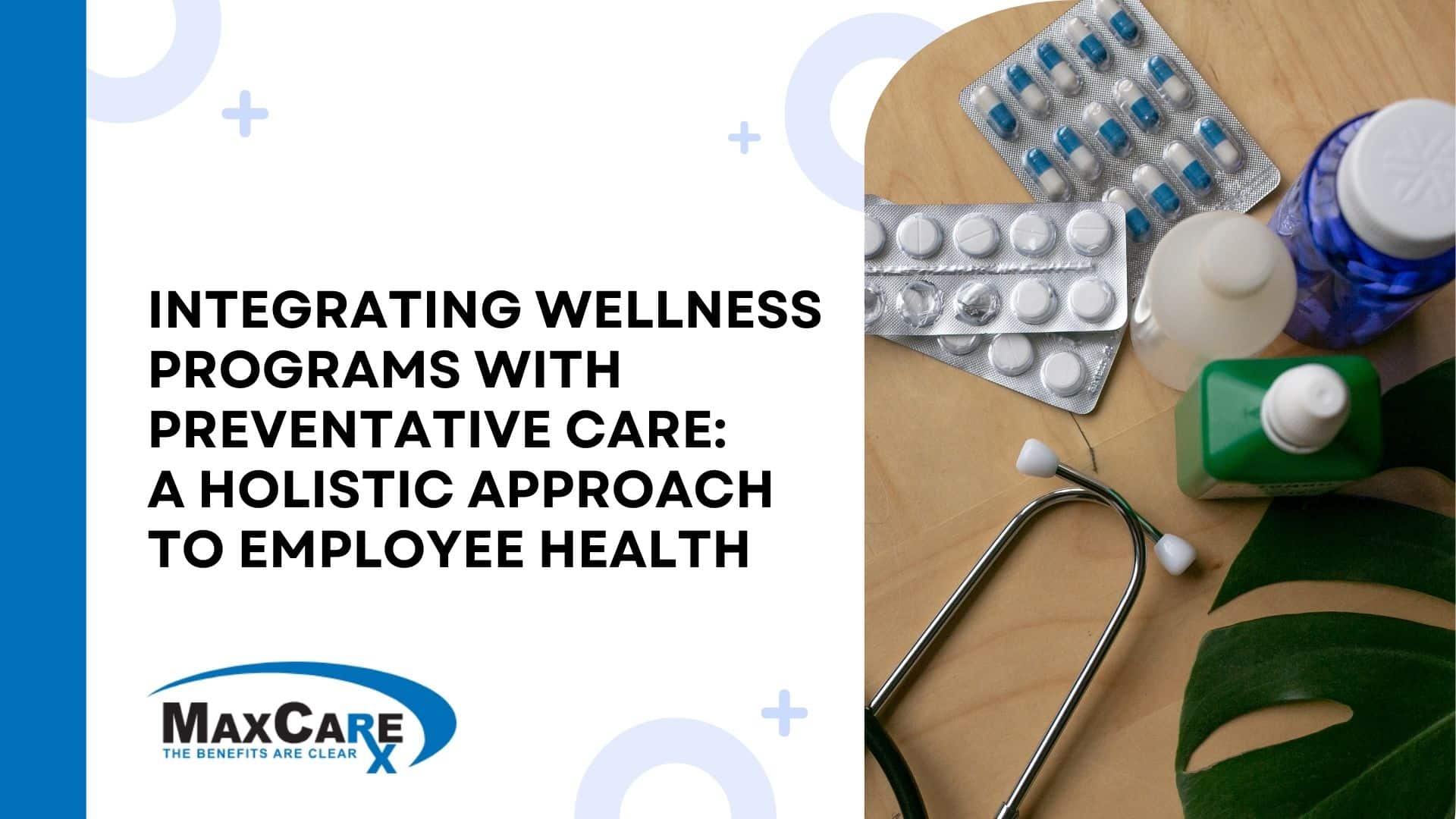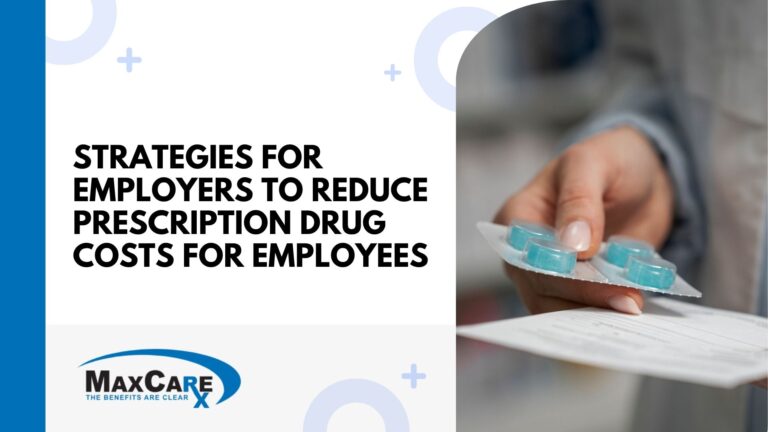The old saying, “an ounce of prevention is worth a pound of cure,” rings true today more than ever, especially when it comes to employee health and workplace productivity. The integration of wellness programs with preventative care strategies has emerged as a critical component in fostering healthier, more productive workforces. Self-funded employers are strategically positioned to leverage these integrations, maximizing both employee well-being and financial sustainability. Let’s examine the vital role that pass-through Pharmacy Benefit Managers (PBMs) play in this integration, providing a transparent and data-driven framework for improved health outcomes.
Understanding the Synergy between Wellness Programs and Preventative Care
The synergy between wellness programs and preventative care forms the foundation of a holistic health strategy. Wellness programs, focused on promoting healthy lifestyles and reducing risk factors, complement preventative care measures, which involve early detection and management of potential health issues. Together, they create a robust ecosystem that supports comprehensive health management for employees.
Why Combine Wellness and Preventative Strategies?
- Enhanced Employee Health and Productivity
By integrating wellness programs with preventative care, employers can significantly improve the overall health of their workforce. Healthier employees tend to be more engaged and productive, directly affecting the company’s bottom line. Additionally, these programs help reduce absenteeism and presenteeism, leading to a more efficient and motivated workforce. - Reduction in Healthcare Costs
Preventative care reduces the need for costly medical interventions by addressing health issues early on. When coupled with wellness programs, the result is a substantial decrease in healthcare costs for self-funded employers. This strategic alliance of cost-saving measures ultimately enhances the company’s profitability.
The Role of PBMs in Wellness and Preventative Care Integration
As self-funded employers increasingly turn toward integrated health strategies to support their workforce, PBMs play a pivotal role in aligning wellness programs with preventative care initiatives. The pass-through PBM model, in particular, stands out in its capacity to foster transparency, customized medication management, and data-driven decision-making which are critical in crafting impactful health interventions.
Emphasizing Transparency through Pass-Through Models
Pass-through PBMs return 100% of manufacturer rebates, discounts, and other price concessions to the health plan or employer and charge only a clear, upfront administrative fee—eliminating hidden mark-ups or “spreads.” This model differs from traditional PBMs, which typically keep a share of manufacturer rebates and build hidden “spreads” between what they pay pharmacies and what they charge plans, further using that margin plus fees as their revenue.
The cornerstone of the pass-through PBM model is its steadfast commitment to transparency. This model operates distinctively by ensuring that all savings and rebates are promptly returned to the employer. Such transparency eliminates ambiguities in medication pricing structures, thereby providing employers with a clear and comprehensive understanding of their medication expenses.
For self-funded employers, this transparency is not merely about clarity—it is about empowerment. By having full visibility into costs, employers can make educated decisions regarding their health strategies. This precision allows for meticulous budgeting and resource allocation, facilitating the seamless integration of wellness and preventative care strategies within their overall healthcare ecosystem. Employers can allocate funds more effectively, ensuring that their investments in employee health yield maximum returns.
Tailored Medication Management
The role of PBMs extends beyond simple cost management to the nuanced domain of tailored medication management. With access to comprehensive data on employee health needs and medication usage, PBMs can craft customized medication management programs that align seamlessly with wellness and preventative care goals.
This tailored approach involves several key strategies:
- Promoting the Use of Generics: Generics offer a cost-effective alternative to brand-name drugs without compromising efficacy. By encouraging their use, PBMs can reduce prescription drug spending significantly.
- Ensuring Adherence to Prescribed Therapies: Adherence is critical to the success of any medication regimen. PBMs can deploy strategies to boost compliance, such as reminders, patient education, and simplified access to medications, ensuring employees achieve optimal health outcomes.
- Identifying Therapy Gaps: PBMs are adept at analyzing medication utilization data to identify gaps where preventative measures could enhance health outcomes. For instance, if data indicates high usage of medications for chronic conditions, PBMs can recommend wellness programs targeting lifestyle changes that may mitigate dependency on such treatments.
Data-Driven Decision Making
The ability to harness data to drive decision-making is a transformative capability that pass-through PBMs offer to self-funded employers.
- Analyzing Trends and Outcomes: By systematically analyzing prescription data and health trends, PBMs can spotlight which wellness initiatives are delivering tangible benefits and which are falling short. This analysis is not static; it is dynamic and ongoing, allowing employers to refine and adjust their strategies as needed.
- Informing Strategic Decisions: With clear insights into what works and what doesn’t, employers can make informed strategic decisions about their employee health programs. This involves not only tweaking existing programs but also innovating new ones that better serve the evolving needs of their workforce.
- Optimizing Wellness and Preventative Efforts: Continuous data analytics ensures that wellness and preventative care programs are continually honed for maximum impact. It allows for the fine-tuning of interventions, ensuring that they remain relevant and effective in addressing current health challenges within the employee population.
Implementing Successful Wellness Programs
Identifying Key Health Concerns
The first step in implementing successful wellness programs is to identify prevalent health issues within the workforce. This data-driven approach allows for targeted interventions that address the specific needs of employees, maximizing the potential health benefits.
Encouraging Employee Participation
A successful wellness program relies heavily on high levels of employee engagement. Employers should strive to cultivate an inclusive environment where participation is encouraged through incentives, education, and accessible health resources.
Customizing Wellness Offerings
Customizing wellness programs to meet the diverse needs of employees is essential. This customization might involve offering a range of initiatives, from fitness challenges and nutritional counseling to mental health resources and smoking cessation programs. By catering to a broad spectrum of health interests and requirements, employers can ensure that the program resonates with their entire workforce.
Strengthening Preventative Care Initiatives
Promoting Regular Screenings and Check-Ups
Encouraging employees to participate in regular health screenings and check-ups is a cornerstone of effective preventative care. These proactive measures enable early detection and intervention, reducing the risk of developing severe health conditions.
Integrating Health Risk Assessments
Health risk assessments (HRAs) provide valuable insights into employee health and can be seamlessly integrated into preventative care strategies. By identifying risk factors, employers can tailor wellness programs and medical interventions to mitigate potential health challenges.
Educating Employees on Preventative Practices
Education plays a pivotal role in preventative care. By providing employees with information on the importance of preventative practices, employers can empower them to take an active role in their health management, reinforcing the effectiveness of broader health strategies.
The Financial Impact of Integrated Health Strategies
Long-Term Cost Savings
Integrating wellness programs with preventative care not only enhances employee health but also leads to long-term cost savings. As preventative measures reduce the incidence of costly health issues, employers can allocate resources more effectively and reduce insurance premiums over time.
Enhancing ROI on Health Investments
The strategic alignment of wellness and preventative care increases the return on investment (ROI) for employers. By promoting healthier lifestyles and reducing the need for intensive medical treatment, employers can see significant financial returns from their health initiatives.
Boosting Employee Retention and Satisfaction
A comprehensive approach to employee health contributes to higher job satisfaction and retention rates. When employees feel supported in their health journeys, their loyalty and commitment to the organization increase, reducing turnover costs and enhancing workplace culture.
Conclusion: A Path to Sustainable Employee Health
The implementation of such integrated health strategies not only enhances individual well-being but also strengthens organizational resilience and financial performance. As employers navigate the complexities of modern healthcare, adopting a holistic perspective will ensure that they remain at the forefront of employee health innovation.
Through the transparency afforded by pass-through models, the precision of tailored medication management, and the insights from data-driven decision-making, PBMs empower self-funded employers to create health strategies that are not only effective and sustainable but also crucial for the long-term well-being of their workforce. This collaborative approach ensures that employee health initiatives are aligned with organizational goals and positioned for success, now and into the future.
Are you ready to take a more proactive, integrated approach to employee wellness and preventative care? Partnering with a transparent, trusted partner like PPOK can help you invest in prevention today- and avoid costly interventions tomorrow.


